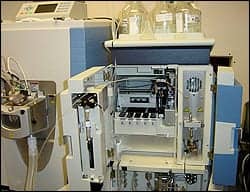
I also know about this because editors and babysitters share more than a few responsibilities, and this month, my baby — CLP — just didn’t want to go to bed. (Bed for a magazine is the printer.) Every time we were sure we had it tucked in, something would change and it would be up, thrashing about and demanding more attention. Maybe you’ve experienced that kind of month yourself.
Fortunately, it was all worth the extra effort.
This month’s disease management section spotlights Men’s Health with an emphasis on prostate cancer. What it lacks in size, this tiny gland makes up for in deadliness. Prostate cancer claims the No. 3 spot for cancer deaths among U.S. men and is the most common cause of death from cancer in men over 75 years old. For this reason, screening is an important issue, one that laboratorians can help educate other clinicians and patients about.
There are those who believe that the benefits of prostate cancer screening are widely under-valued by some in the medical community. This may be because they are not aware of improvements in the specificity of the prostate cancer testing. For example, running a free PSA test along with a total PSA can help pinpoint or rule out cancer to a much greater degree than previously thought possible.
When it comes to the prevention of prostate cancer, there are numerous findings that link a low-fat, high-fiber diet to a lower risk for the disease. It’s vital that men, especially those who are at high risk for the disease, are aware of what they can do to prevent it.
Also in Men’s Health, an interesting study from Canada. This one found that teenagers and young men who exercise strenuously might be putting themselves at a higher risk for testicular cancer. The findings are far from conclusive, but the results were too interesting to pass up. Even the researchers who did the study started out thinking they would find the opposite of what they did. Their conclusion: more study is needed before any sweeping public health recommendations are made.
On page 38, our Product Technology Brief looks at a novel use for Adobe Photoshop, one of the world’s most widely used software programs for photo manipulation. A German doctor, whose wife is a graphic designer, has had great success in using Photoshop to get an accurate and speedy count of cell nuclei in breast cancer cells.
Coleen Curran
Editor



